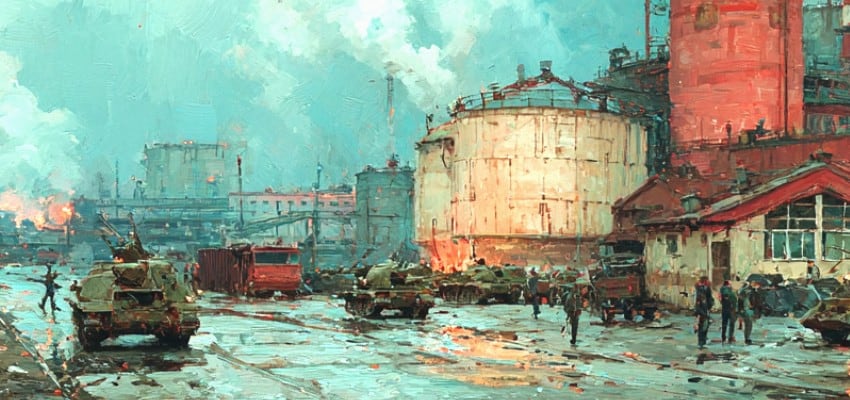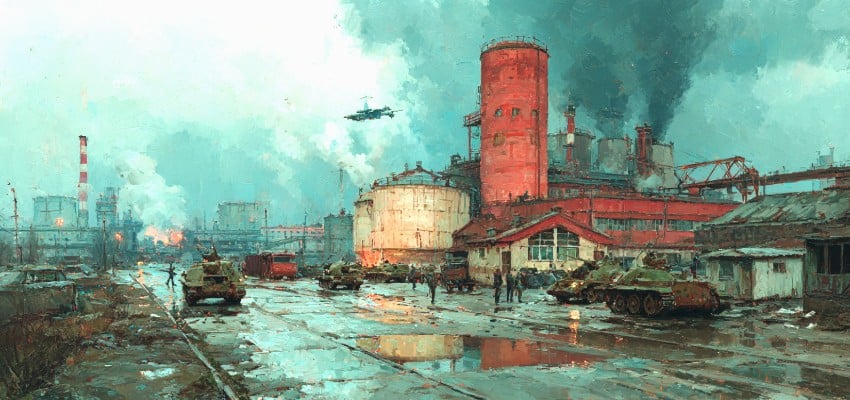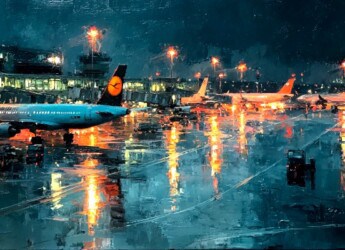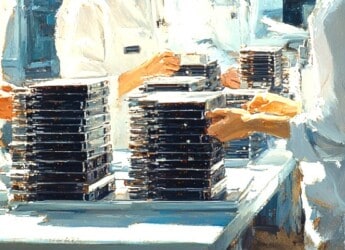Editor’s Note: Russia’s deepening war economy and evolving battlefield strategies strip away any illusion that this conflict is nearing a negotiated resolution. By “deepening war economy,” we refer to the systemic reorientation of Russia’s national budget, industrial capacity, and labor force toward sustaining long-term military operations—at the expense of civilian investment and fiscal stability. Through intensified military production, systemic use of banned weapons, and persistent efforts to reshape the information landscape, Moscow is embedding its war aims into the fabric of its national policy.
This article, based on the latest assessment from the Institute for the Study of War (ISW), presents a detailed analysis of the military, technological, and geopolitical dimensions shaping the summer phase of the Russo-Ukrainian War—highlighting Russia’s long-term mobilization strategy, Ukraine’s localized tactical gains, and the expanding role of drones, chemical agents, and state-led disinformation.
For professionals in cybersecurity, intelligence, and national security, these developments underscore a maturing threat environment where conventional military operations intersect with strategic technological escalation and hostile narrative engineering. Understanding the mechanics of this evolving campaign—including infrastructure targeting, asymmetric strike capabilities, and the institutionalization of militarized governance—is essential for anticipating emerging risk vectors in a geopolitical climate defined by sustained conflict and strategic uncertainty.
For those seeking to grasp the full scope of this evolving landscape, the complete updates from the Institute for the Study of War serve as an invaluable resource.
Content Assessment: Grinding Through Summer: Russia’s Expanding War Economy and Tactical Adaptations in Ukraine
Information - 94%
Insight - 93%
Relevance - 92%
Objectivity - 94%
Authority - 95%
94%
Excellent
A short percentage-based assessment of the qualitative benefit expressed as a percentage of positive reception of the recent article from ComplexDiscovery OÜ titled, "Grinding Through Summer: Russia’s Expanding War Economy and Tactical Adaptations in Ukraine."
Background Note: ComplexDiscovery’s staff offers distinctive perspectives on the Russo-Ukrainian war and Middle Eastern conflicts, informed by their military experience on the West German, East German, and Czechoslovakian borders during the Cold War, as well as in Sinai as part of Camp David Accord compliance activities, during the timeframe of the Persian Gulf War. This firsthand regional knowledge has been further enhanced by recent staff travels to Eastern European countries, including Estonia, Finland, Latvia, Lithuania, and Poland. These visits have provided up-to-date, on-the-ground insights into the current geopolitical climate in regions directly impacted by the ongoing conflict.
Combined with cybersecurity, information governance, and eDiscovery proficiency, this multifaceted experience enables comprehensive analysis of these conflicts, including the critical impact of cyber warfare, disinformation, and digital forensics on modern military engagements. This unique background positions ComplexDiscovery to provide valuable insights for conflict-related investigations and litigation, where understanding the interplay of technology, data, and geopolitical factors is crucial.
Russo-Ukrainian Conflict Update*
Grinding Through Summer: Russia’s Expanding War Economy and Tactical Adaptations in Ukraine
ComplexDiscovery Staff
As the summer fighting season grinds on, the war in Ukraine reveals itself as an evolving contest of endurance, technology, and political will. The current operational landscape is shaped by Russia’s aggressive militarization and Ukraine’s tactical resilience. While frontlines shift only incrementally, the broader struggle is being recalibrated through defense-industrial investment, battlefield adaptation, and strategic messaging. What emerges is a war no longer defined solely by territory, but by systems, economies, and time.
Russian leadership continues to project economic stability, asserting that inflation is under control and forecasting future reductions in military spending. Yet these proclamations diverge from fiscal realities as military spending is now at its highest proportion of GDP since the Soviet era. Defense expenditures currently dominate the national budget, accounting for over 40 percent of annual spending, with the military budget rising to over six percent of GDP. In the face of slumping oil revenues and a widened federal deficit, the state’s pivot toward long-term defense production indicates a deeper entrenchment in war-driven economic planning.
Russian leadership also continues to frame its aggression through a well-established narrative architecture that blames the West for provoking the war and portrays Ukraine as a proxy actor. Recent statements have revived long-discredited claims that NATO promised not to expand eastward and that Russia was “crudely deceived.” Simultaneously, Moscow alleges that Ukraine is refusing to recover the remains of its fallen soldiers, casting Kyiv as indifferent to its own servicemen. These assertions—unsupported by evidence—form part of a broader information campaign designed to demoralize the Ukrainian population, discredit its leadership, and justify Russia’s maximalist war aims. This narrative warfare reinforces Russia’s refusal to accept any settlement outside its own terms, which continue to demand the subjugation of Ukrainian sovereignty under the guise of “denazification” and “demilitarization.”
This posture is reflected in Russia’s expanding capacity to produce military materiel. Aircraft and naval production rates have surged, and armored vehicle refurbishment and manufacturing—particularly of infantry fighting vehicles (IFVs) and T-90M tanks—are accelerating. Facilities such as Kurganmashzavod and newly modernized plants in Altai Krai are central to these efforts. Notably, Russia’s drone sector has seen exponential growth, including the mass production of fiber-optic drones immune to electronic warfare. These systems now play a crucial role on the frontlines, enabling precise and resilient strikes against Ukrainian positions.
Russian tactical doctrine is evolving alongside its technological capabilities. Military units are increasingly relying on drones such as the Geran-2 and Geran-3 for frontline engagements, phasing out older glide bombs in favor of loitering munitions that are faster, more precise, and harder to intercept. These systems are being used to disrupt Ukrainian logistics, target command posts, and suppress defensive positions. In the central and eastern axes, Russian forces are conducting persistent, small-unit assaults, supported by light vehicles in good weather and heavier armor under adverse conditions.
Amid these challenges, Ukrainian forces are demonstrating localized tactical successes. Counterattacks in sectors north of Lyman have yielded regained positions, even as Russian forces continue offensive operations in multiple directions. In areas surrounding Kupyansk, Ukrainian units report intensified Russian use of airpower and a decline in artillery barrages, suggesting a shift in strike doctrine. Russian attempts to establish river crossings and deploy forces via rafts and boats point to ongoing logistical improvisation.
To the south, contested zones such as Pokrovsk, Toretsk, and western Zaporizhia remain theaters of active operations. Russian troops have reportedly made incremental advances supported by extensive drone use and high personnel concentrations—over 100,000 in some sectors. In response, Ukrainian defenders are leveraging precision drone strikes and exploiting windows of air superiority. Ukrainian drone units have successfully targeted Russian air defense assets in occupied Crimea, undercutting Russian rear-area security.
Despite these adaptations, the war has also taken on more ominous dimensions. The confirmed use of chemical agents—specifically CS gas delivered via drones—against Ukrainian positions near administrative boundaries marks a dangerous escalation and a clear breach of the Chemical Weapons Convention. With hundreds of recorded incidents in a single month, the pattern suggests systematic deployment rather than isolated violations.
On the domestic front, Russia and Belarus are accelerating youth militarization under the banner of patriotic education. Programs are being expanded to inculcate military values, with state-sponsored initiatives promoting national service, traditionalism, and anti-Western ideology. This social dimension of militarization underscores a broader strategy to institutionalize conflict readiness, shaping future generations for sustained geopolitical confrontation.
In this landscape, the summer campaign becomes a crucible not merely of manpower and materiel, but of national will and strategic vision. The battlefield outcomes, though tactically significant, are only part of a deeper competition rooted in economic mobilization and technological adaptation. Ukraine’s targeted strikes and operational tenacity reveal an agile defensive posture, while Russia’s systemic investment in defense infrastructure signals a long war calculus.
As the conflict continues to grind forward through summer, a critical question emerges: will Russia’s expansive militarization and technological recalibration allow it to outlast Ukraine and its Western supporters—or will Ukraine’s adaptability and strategic precision shift the momentum before entrenched stalemates become the new norm?
Detailed Reporting with Maps for June 27, 2025, from the ISW – Mouseover to Scroll
Russo-Ukrainian War June 27 2025 - Update NewReview the Detailed Reporting and Maps PDF
About the Institute for the Study of War Research Methodology
ISW’s research methodology relies on both primary and secondary sources, enabling researchers to develop a comprehensive understanding of the situation on the ground. In order to analyze military and political developments in any given area, ISW’s research analysts must wholly understand the systems of enemy and friendly forces. They must also understand the population demographics, physical terrain, politics, and history of that area. This lays the analytical foundation for understanding the reasons for particular developments and fulfilling their assigned research objectives. ISW analysts also spend time in places like Iraq, Afghanistan, and elsewhere in order to gain a better understanding of the security and political situation and to evaluate the implementation of current strategies and policies. Their researchers compile data and analyze trends, producing a granular analysis of developments in areas of research, producing an accurate, high-resolution, timely, and thorough picture of the situation. ISW’s research methodology guarantees its success and commitment to improving the nation’s ability to execute military operations, achieve strategic objectives, and respond to emerging problems that may require the use of American military power.
About the Institute for the Study of War
The Institute for the Study of War advances an informed understanding of military affairs through reliable research, trusted analysis, and innovative education. They are committed to improving the nation’s ability to execute military operations and respond to emerging threats in order to achieve U.S. strategic objectives. ISW is a non-partisan, non-profit, public policy research organization.
Learn more, get involved, and contribute today.
Assisted by GAI and LLM Technologies
* Sourced and shared with direct expressed permission from the Institute for the Study of War (ISW).
Additional Reading
- From Dissent to OSINT? Understanding, Influencing, and Protecting Roles, Reputation, and Revenue
- Data Embassies: Sovereignty, Security, and Continuity for Nation-States
Source: ComplexDiscovery OÜ
























